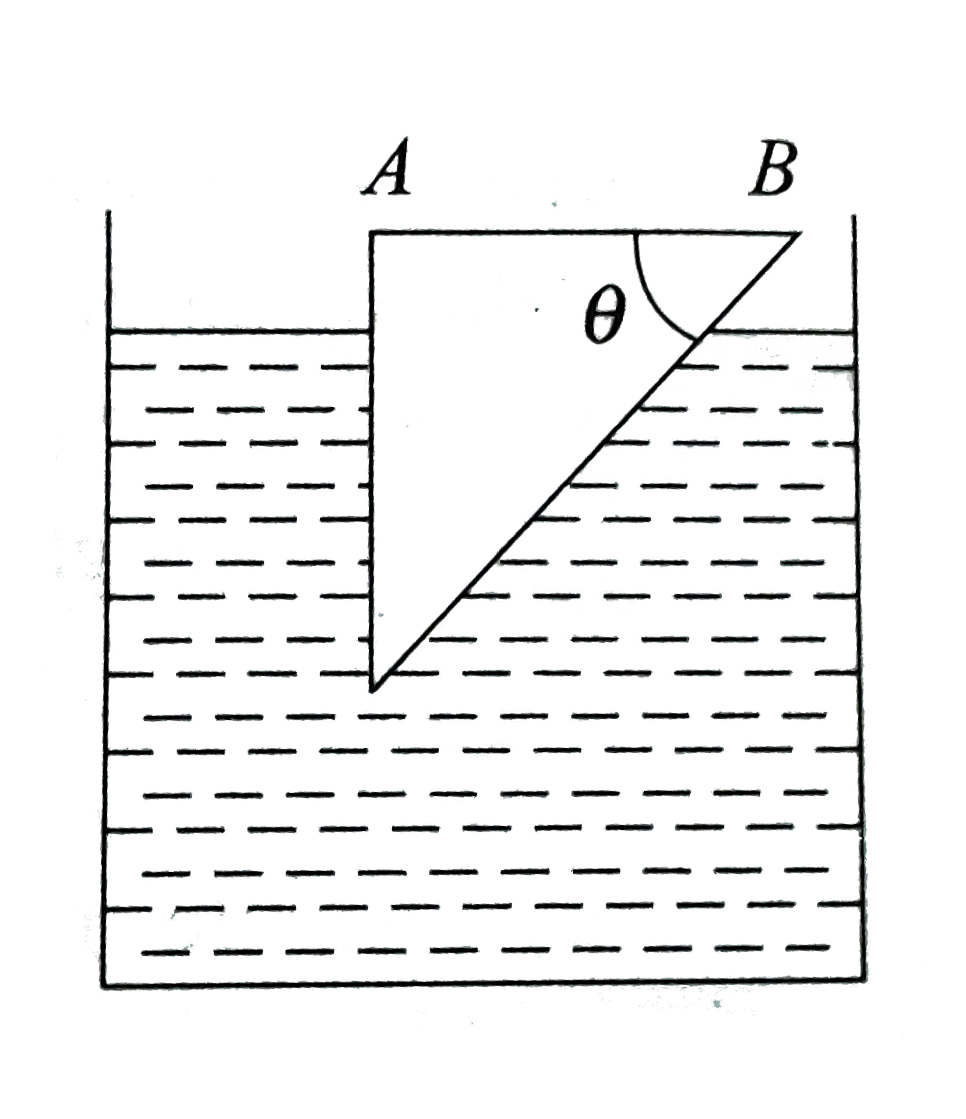The figure shows a ray of light falling normally on the face AB of an equilateral glass prism having refractive index 32, placed in water of refractive index 43. Will this ray suffer total internal reflection on striking the face AC? Justify your answer?
 2
2
For equilateral prism, angle of the prism, A=60∘ . Critical angle of the glass relative to water medium,
θc=sin−1(1wμg)=sin−1(μwμg)
=sin−1(43×23)=sin−1(89)=62.73∘
On the face AC, the ray is incident at an angle 60∘ which is less than θc. Thus the ray suffers no total internal reflection rather it is refracted in water medium.

Topper's Solved these Questions
- REFRACTION OF LIGHTBOOK - CHHAYA PUBLICATIONCHAPTER - REFRACTION OF LIGHTEXERCISE - NEET
3 Videos
- REFLECTION OF LIGHTBOOK - CHHAYA PUBLICATIONCHAPTER - REFLECTION OF LIGHTEXERCISE - INTEGER ANSWER TYPE
3 Videos
- SEMICONDUCTORS AND ELECTRONICS BOOK - CHHAYA PUBLICATIONCHAPTER - SEMICONDUCTORS AND ELECTRONICS EXERCISE - CBSE SCANNER
31 Videos
Similar Questions
(a) Show using a proper diagram how unpolarised light can be linearly polarised by reflection from a transparent glass surface.
(b) The figure shows a ray of light falling normally on. the face AB of an equilateral glass prism having refractive index 3/2, placed A in water of refractive index 4/3. Will this ray suffer total internal reflection on striking the face AC? Justify your answer.
View Solution(a) Show using a proper diagram how unpolarised light can be linearly polarised by reflection from a transparent glass surface.
(b) The figure shows a ray of light falling normally on. the face AB of an equilateral glass prism having refractive index 3/2, placed A in water ofrefractive index 4/3. Will this ray suffer total internal reflection on striking the face AC? Justify your answer.
View Solution
Knowledge Check
A ray of light is incident normally on one face of an equilateral prism of refractive index 1.5. The angle of deviation is: (Given sin−1.23=42∘)
A30∘B45∘C60∘D75∘A glass prism of refractive index 1.5 is immersed in water (refractive index 4/3) . A light beam normally on the face AB is totally reflected to reach on the face BC if
 Asinθ≥89B23<sinθ≥<89Csinθ≤23Dsinθ≤89
Asinθ≥89B23<sinθ≥<89Csinθ≤23Dsinθ≤89A ray of light is incident normally on one face of 30∘−60∘−90∘ prism of refractive index 5/3 immersed in water of refractive index 4/3 as shown in figure .
_E01_076_Q01.png) AThe exit angle of θ2 of the ray is sin−1(5/8)BThe exit angle θ2 of the ray is sin−1(54√3)CTotal internal reflection at point P ceases if the refractive index of water is increased to 52√3 by some substanceDTotal internal reflection at point P ceases if the refractive index of water is increased to 5/6 by dissolving some substance
AThe exit angle of θ2 of the ray is sin−1(5/8)BThe exit angle θ2 of the ray is sin−1(54√3)CTotal internal reflection at point P ceases if the refractive index of water is increased to 52√3 by some substanceDTotal internal reflection at point P ceases if the refractive index of water is increased to 5/6 by dissolving some substance
(a) Show using a proper diagram how unpolarised light can be linearly polarised by reflection from a transparent glass surface.
(b) The figure shows a ray of light falling normally on. the face AB of an equilateral glass prism having refractive index 3/2, placed A in water ofrefractive index 4/3. Will this ray suffer total internal reflection on striking the face AC? Justify your answer.
View SolutionA light ray is normally incident onone face of equilateral glass prism of refractive index √2. The deviation of light ray is
View SolutionA light ray falls perpendicular on one face of an equilateral prism having refractive index √2 .The angle of deviation is :
View SolutionA ray of light is incident normally on one face of an equilateral prism of refractive index 1.5. The angle of deviation is: (Given sin−1.23=42∘)
View SolutionA glass prism of refractive index 1.5 is immersed in water (refractive index 4/3) . A light beam normally on the face AB is totally reflected to reach on the face BC if

View Solution
